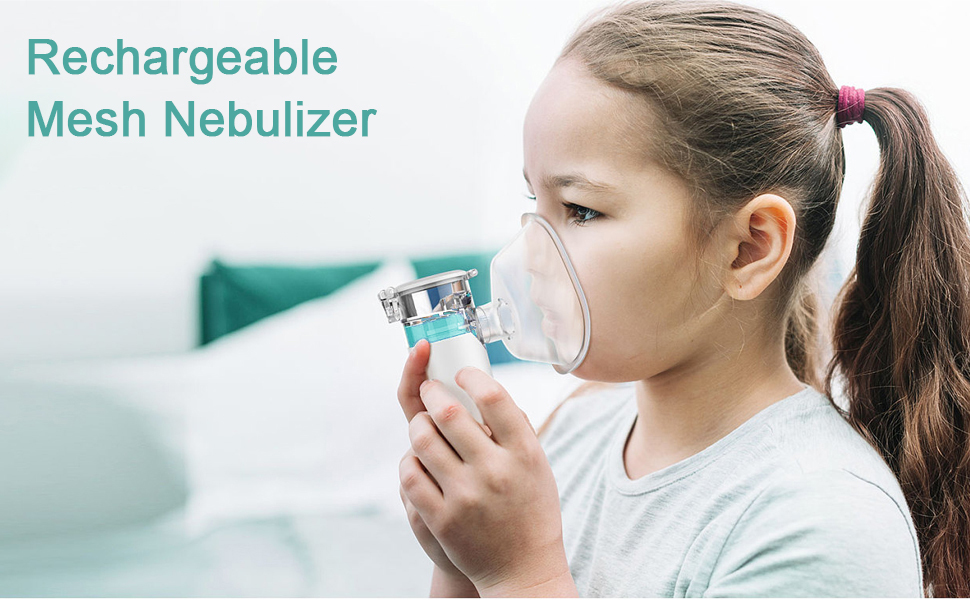Portable Handheld Nebulizer: Uses, Cleaning and Disinfection
What Is a Nebulizer?
A nebulizer changes medication from a liquid to a mist so you can inhale it into your lungs. Nebulizers come in home (tabletop) and portable models. Home nebulizers are larger, and you have to plug them into an electrical outlet. Portable nebulizers run on batteries, or you can plug them into a car outlet. Some are only a bit bigger than a deck of cards, so you can carry them in a bag or briefcase.
Types of Nebulizers
There are three main types of nebulizers:
- Jet. This uses compressed gas to make an aerosol (tiny particles of medication in the air).
- Ultrasonic. This makes an aerosol through high-frequency vibrations. The particles are larger than with a jet nebulizer.
- Mesh. Liquid passes through a very fine mesh to form the aerosol. This kind of nebulizer puts out the smallest particles. It’s also the most expensive.
Talk to your doctor about whether a mouthpiece or a mask is right for you or your child. Face masks, which fit over the nose and mouth, are often better for children under 5 because they breathe through their nose more than older children and adults do.
Why Might You Use a Nebulizer?
Nebulizers are especially good for infants’ or small children’s asthma medications. They’re also helpful when you have trouble using an asthma inhaler or need a large dose of an inhaled medication.
Nebulized therapy is often called a breathing treatment. You can use nebulizers with a variety of medications, both for controlling asthma symptoms and for relief right away.
How Do I Use a Nebulizer?
- Put the air compressor on a flat, sturdy surface. Plug it into a grounded (three-prong) electrical outlet.
- Put medication into the nebulizer cup. Most comes already measured in unit dose vials. If you have to measure it yourself, use a separate clean measuring device for each medication.
- Assemble the nebulizer cup and mask or mouthpiece.
- Sit up straight on a comfortable chair. If the treatment is for your child, they can sit on your lap. If you’re using a mask, put it on. Be sure it’s comfortable and secure. If you’re using a mouthpiece, put it between your or your child's teeth and seal the lips around it.
- Take slow, deep breaths. If possible, hold each breath for 2 or 3 seconds before breathing out. This lets the medication settle into your airways.
- Continue until the medication is gone. The nebulizer will make a sputtering noise, and the cup will have just a little liquid left in it.
If medication sticks to the sides of the nebulizer cup during treatment, you can shake the cup to loosen it.

How Do I Care for My Nebulizer?
It’s important to clean and disinfect your asthma nebulizer equipment to prevent infection. Clean it in an area away from smoke, dust, and open windows.
Follow these instructions for cleaning your nebulizer:
- After each treatment, rinse the nebulizer cup thoroughly with warm water, shake off excess water, and let it air-dry. At the end of each day, wash the cup and mask or mouthpiece in warm water with a mild detergent. Rinse it thoroughly and let it air-dry. You don’t need to clean the compressor tubing.
- Every third day, after washing your equipment, disinfect it with either a vinegar/water solution or a disinfectant solution. To make the vinegar solution, mix ½ cup of white vinegar with 1½ cups of water. Soak the equipment for 20 minutes and rinse it well under a steady stream of water. Shake off the excess water and let it air-dry on a paper towel. Be sure it’s totally dry before storing it in a zippered plastic bag.










